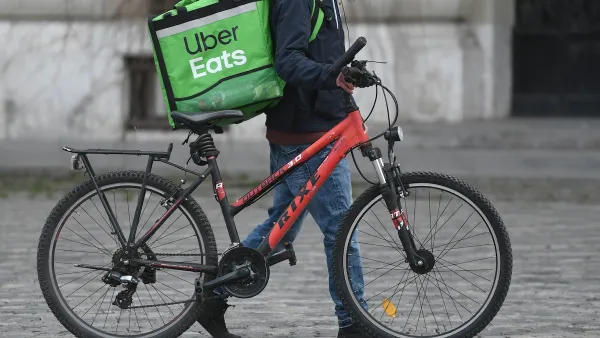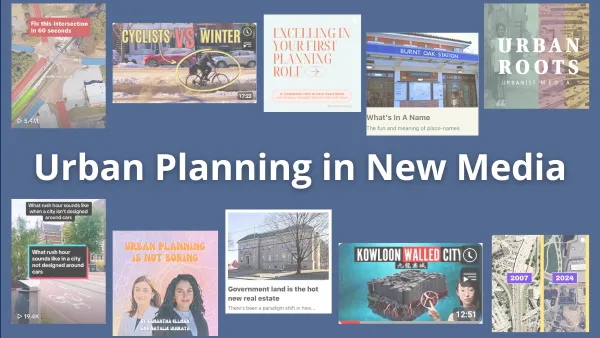A new report from the U.S. PIRG Education Fund looks at how innovations in technology and social networking are changing the country's transportation landscape, and contributing to the decline in driving.
Teleconferencing, e-commerce, transit apps, social media, and smartphones are among the emerging technologies having a profound impact on how, and how often, Americans travel (especially young ones). That's the conclusion of a new report out this week from Phineas Baxandall and his colleagues at the U.S. PIRG Education Fund.
But just how much of the an impact has technology had on the decline in vehicle travel? "It's virtually impossible to quantify the cumulative impact of all this technological change on the decline in driver's licenses or car registrations or miles traveled (is 'new technology' responsible for 15 percent of the drop? 30 percent?)," says Emily Badger. "Baxandall reasons, though, that 'it’s definitely a significant piece of what’s behind the driving trends. But if you look to the future, it seems even more significant. All of these things are really just in their infancy.'"
But on the related question of how lasting the accompanying urban revival will be, the report includes some interesting findings. "Notably, only 27 percent of child-less Millennials said they picture themselves residing long-term in an urban setting, a decision that dictates many of the transportation modes available to them (there's no point in using a transit app if you live nowhere near transit)," notes Badger. "And so this is reason for caution in tracing these trends out into the future."
FULL STORY: What the Rise of Technology Has to Do With the Decline of Driving

National Parks Layoffs Will Cause Communities to Lose Billions
Thousands of essential park workers were laid off this week, just before the busy spring break season.

Retro-silient?: America’s First “Eco-burb,” The Woodlands Turns 50
A master-planned community north of Houston offers lessons on green infrastructure and resilient design, but falls short of its founder’s lofty affordability and walkability goals.

Delivering for America Plan Will Downgrade Mail Service in at Least 49.5 Percent of Zip Codes
Republican and Democrat lawmakers criticize the plan for its disproportionate negative impact on rural communities.

Test News Post 1
This is a summary

Test News Headline 46
Test for the image on the front page.

Balancing Bombs and Butterflies: How the National Guard Protects a Rare Species
The National Guard at Fort Indiantown Gap uses GIS technology and land management strategies to balance military training with conservation efforts, ensuring the survival of the rare eastern regal fritillary butterfly.
Urban Design for Planners 1: Software Tools
This six-course series explores essential urban design concepts using open source software and equips planners with the tools they need to participate fully in the urban design process.
Planning for Universal Design
Learn the tools for implementing Universal Design in planning regulations.
EMC Planning Group, Inc.
Planetizen
Planetizen
Mpact (formerly Rail~Volution)
Great Falls Development Authority, Inc.
HUDs Office of Policy Development and Research
NYU Wagner Graduate School of Public Service




























